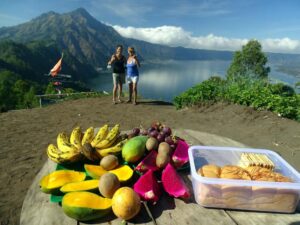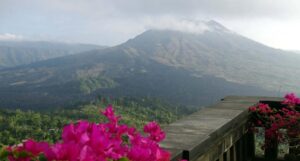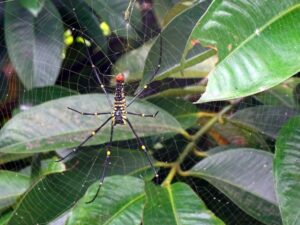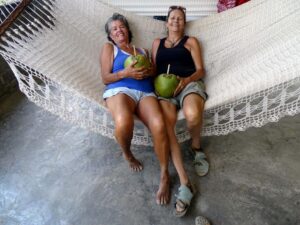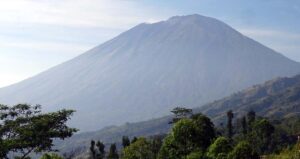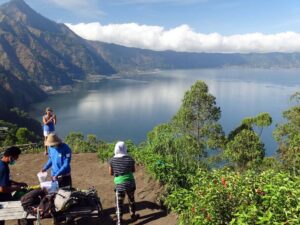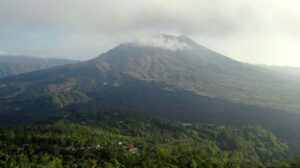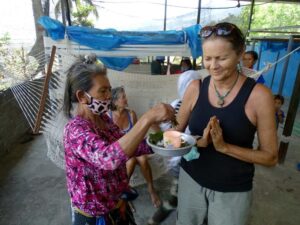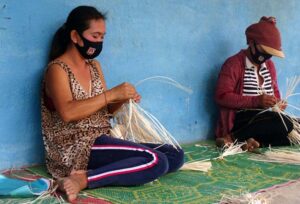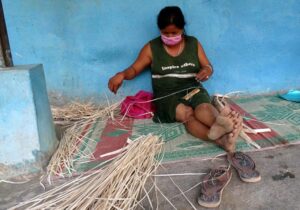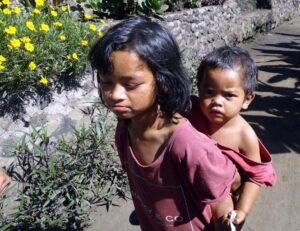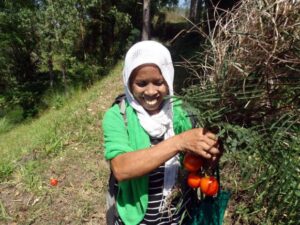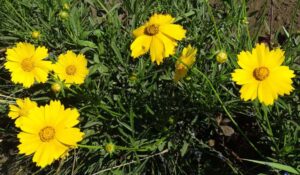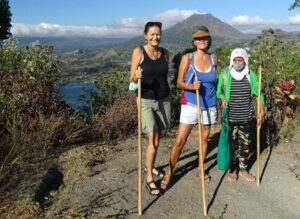Mar-Apr2023 Bali: Mt Batur Trek

Discover Bali: Mt. Batur
"When the well is dry, we'll know the worth of water." -
Benjamin Franklin
Water. The elixir of life. Water brings life, expands energy, allows us to exist, creates beauty in Nature. The five elements, earth, fire, water, air and ether. All essential but without water, this basic element, life could not exist as we know it.
We take water and our relationship with this element for granted. Spending 6 weeks parked in the sand along the shores of massive Lake Malawi in Africa, we observed with joy the meager but plentiful life of the locals; all due to their abundant and symbiotic relationship with fresh water. Ten miles back from the lake life was a hot tortuous struggle with apparent lack of drinking and washing water. Crops dried up and withered away under the intense sun. Prosperity vanished. Survival remains.
In Omo Valley, Ethiopia, the Mursi women had to walk 20 kms.to get drinking water from a muddy watering hole. In a battered plastic water bottle it looked like they were drinking chocolate milk! We just take our water for granted as we turn on the tap or flush the toilet. We remember a photo of a perplexed young African boy, from a village such as described above, asking a sincere question, “You use clean water to flush your toilets?” Think on that.
Hidden on the back leeward slopes of Mt. Batur, in remote Bali, lie the Muntrigunung villages. The ridge top of the mountain shows stunning Lake Batur on one side and the ocean far below the other side. The 36 Muntri villages have stunning views and NO water. The women for decades have climbed up the steep slopes of Mt. Batur and down the other side to the fresh shores of Lake Batur. Struggling up the steep incline they would rest at the top only to continue their arduous journey back down to their village; a 4 hour journey. A misstep on the precarious, crumbling path meant a disastrous spill; and retracing their steps to secure yet another heavy load of the liquid gold. There was no excuse allowed for returning without this necessary element in tow. Life on the side of this barren mountain hangs in the balance.
Eighteen years ago a Swiss Doctor, Daniel Elber, noticed women and children begging on the streets in Bali. Researching the core problem he visited this area, discovering extreme poverty, due mainly to the lack of water. The rainy season offered some reprieve but not enough to sustain these humble folks throughout the year. He set about, all by himself, his remarkable self, to help these suffering Balinese. Soon people were on board and the Muntigunung Project was born.
Here is their story:
https://muntigunung.com/
Our Story
“History
Back in 2004 Muntigunung was one of the poorest areas in Bali. It was rather inhospitable – simple bamboo huts dotted a dry, brown landscape that had nothing in common with the lush, tropical, touristy South of Bali. Families had no access to water and had to walk for an average of four hours just to fetch water. There were hardly any employment opportunities and the intense long dry season prevented the cultivation of agricultural produce for most of the year. This forced many women and children of Muntigunung to beg in the tourist areas in the south of the island to ensure their survival. As many people in the community relied on income from begging, they used their children as “emotional sales support” with the consequence that these children didn’t attend school, resulting in a continuous cycle of illiteracy and poverty.
A Holistic, Sustainable Approach
In 2006, in an effort to provide a more sustainable and brighter future for the Muntigunung community, Future for Children – a Swiss backed NGO, together with Yayasan Dian Desa, initiated the Muntigunung Community Development Program.
By working alongside the community, specially designed roofs were constructed to harvest and store rainwater in tanks to provide a year-round water supply. After securing and maintaining clean water for every household, the aim was to support the community in accessing healthcare and education and creating employment and economic opportunities through social enterprises. Over the course of several years, child mortality was reduced from 9% to 0%, sanitary facilities were built by the community and access to public healthcare and education facilitated. Three social enterprises were established to develop the area’s economy: Muntigunung Community Social Enterprise (Food), Muntigunung Community Social Handicrafts Enterprise and Muntigunung Trekking.
Today, the buildings initially built to harvest rainwater not only provide water, but also function as communal spaces for the residents and production centers for the social enterprises to process food products and produce handicrafts.
Locally Sourced
Whenever possible, our social enterprises purchase raw materials at fair prices directly from the farmers in Muntigunung. We also work together with them to increase their agricultural yield and introduce drought resistant plants such as for example moringa.
Creating a Sense of Pride
Profits from our social enterprises are reinvested, creating more job opportunities within the local area. Being able to work and earn a dignified income creates a sense of pride and enables families to stay together and be role models to their growing children without having to leave their community.
By purchasing our products, you not only hold a beautiful, high quality product in your hands, you are also providing the people of Muntigunung with a brighter, sustainable future.”
And so we set off to explore this remote, uncharted region of NE Bali. With our wonderful guide Pica in the lead and Nengah as caboose we set off straight up a slope. Awaiting us on top were stunning views down both sides and a delicious panoply of colorful fruit from the island. Choosing to follow in the footsteps of the village women, who up to 3 years ago, had to make the daily arduous trek up the mountain, down to the lake, back up the mountain with heavy water jugs, and back down to their village; we embarked on our 8-10 km. adventure. We had no idea! In Africa we witnessed many village women walking for miles in the intense heat just to retrieve sketchy water to use; but this level 5 terrain made these women champs. Nengah, our village guide had to walk up the mountain, then down, then up, and back down with us. We asked her if she was tired. “Not really! I used to do this for years with heavy water jugs on my head! This is easy.” We felt there was no room for complaining after that simple reply!
Down the shady tree lined paths at the top, we wound our way through friendly villages, past spectacular views of Batur Caldera, Mt Agung, Lake Batur, and the deep ‘Grand Canyon’ to our right. My dear friend Brigitte and I have always enjoyed walking, hiking and talking together. Two years ago we made plans to meet on Friday to hike Campuan Ridge outside of Ubud. In the 4 days that followed Fate had another agenda. Twist of Fate. I slipped on wet tile going down 3 steps and broke my leg and tore a tendon. Stroke of Luck. Brigitte suffered a stroke and ended up in hospital. Hike cancelled. Two plus years later we chose to trek approx. 8-10 km. in the footsteps of these courageous village women. So far so good (as the man who fell out of a 20 story building; was heard to say at the 10th floor).
My husband Joseph and I have been traveling the world continuously since 2003. Worlglobetrotters.com says it all. Traveling light, I have been buying 1 pair of leather Teva sandals a year. They have seen me successfully trekking through Bwindi Impenetrable Forest of Uganda in search of Mountain gorillas. Or hiking the Inca Trail to Machu Picchu in Peru. Or hiking the Siq into Petra, hidden deep in the Jordanian desert. Never failed. Never say never. Taking a break in the shade of a kind tree, I noticed when I stood up that my new rugged Teva sandals had separated in the front. Masks proved useful, if not for keeping tiny viruses out, as repair material. Pica proved his resourcefulness as we cut the strap off my old mask and tied my sandal together. A little further, while going down a small hill, a stick jammed between my sole and the foot of the sandal. Down I went. The sun was getting intense. Limping to the shade of the nearest benevolent tree, I realized the sole was completely off and had to be retrieved. The other sandal started decrepitating in direct correlation to my ability to maneuver the steep, rocky, dusty trail. The glue failed and each sandal broke into 4 separate pieces! We sat down and Pica tied a tension bandage around each foot. Looking like a biblical leper or ‘Return of the Mummy’ I cautiously made my way down to the village below, both of us definitely feeling the intensity of the heat. Arriving in quite a state I announced, “ Hello ladies. Anyone want to buy my shoes?” Met with uproarious laughter we joked, rehydrated in the shade, and learned about the ‘basket weaving project’. In the next village we observed another lifesaving water catchment building housing, and the clever ‘hammock weaving project’. We paused to rest our weary souls and soles, amid many smiles and a cool fresh coconut. Continuing on to the Muntigunung Development Center we sampled iced rosella tea and tasty dried fruits and cashews of every flavor. This proved to be a great place to stock up on quality, organic food products and handicrafts. On down the slope we ended up at the ocean for a refreshing swim before a tasty traditional lunch.
This was a day of learning. We learned that we weren’t quite as young as we used to be but that with perseverance we completed the hike in fine form, not any easy task. We learned when life gives you dung, make fertilizer! We learned also that when faced with adversity people who persevere accomplish great things. The chaotic, uncertain year of 2021 will be remembered for decades. Amid the forced changes, hardships and shadows, shines a bright light. In 2021 Muntigunung Project completed its 36th water catchment, now providing water, the elixir of life, to All the villages on this slope of Mt Batur. With the water has come employment and emergence from basic poverty to increased simple prosperity. Is your glass half full of water or half empty?
And so it goes…………………………………..Next a visit to Penang, Malaysia’s ‘Pearl of the Orient’. Until then Keep Laughing, Keep Living Life to the Fullest, and remember to Enjoy each Day. Be grateful for your next tall, cool glass of clean water, the elixir of life. Do not take it for granted. Not everyone has that privilege. Take care and thanks for keeping in touch!!
Love, Light & Laughter,


